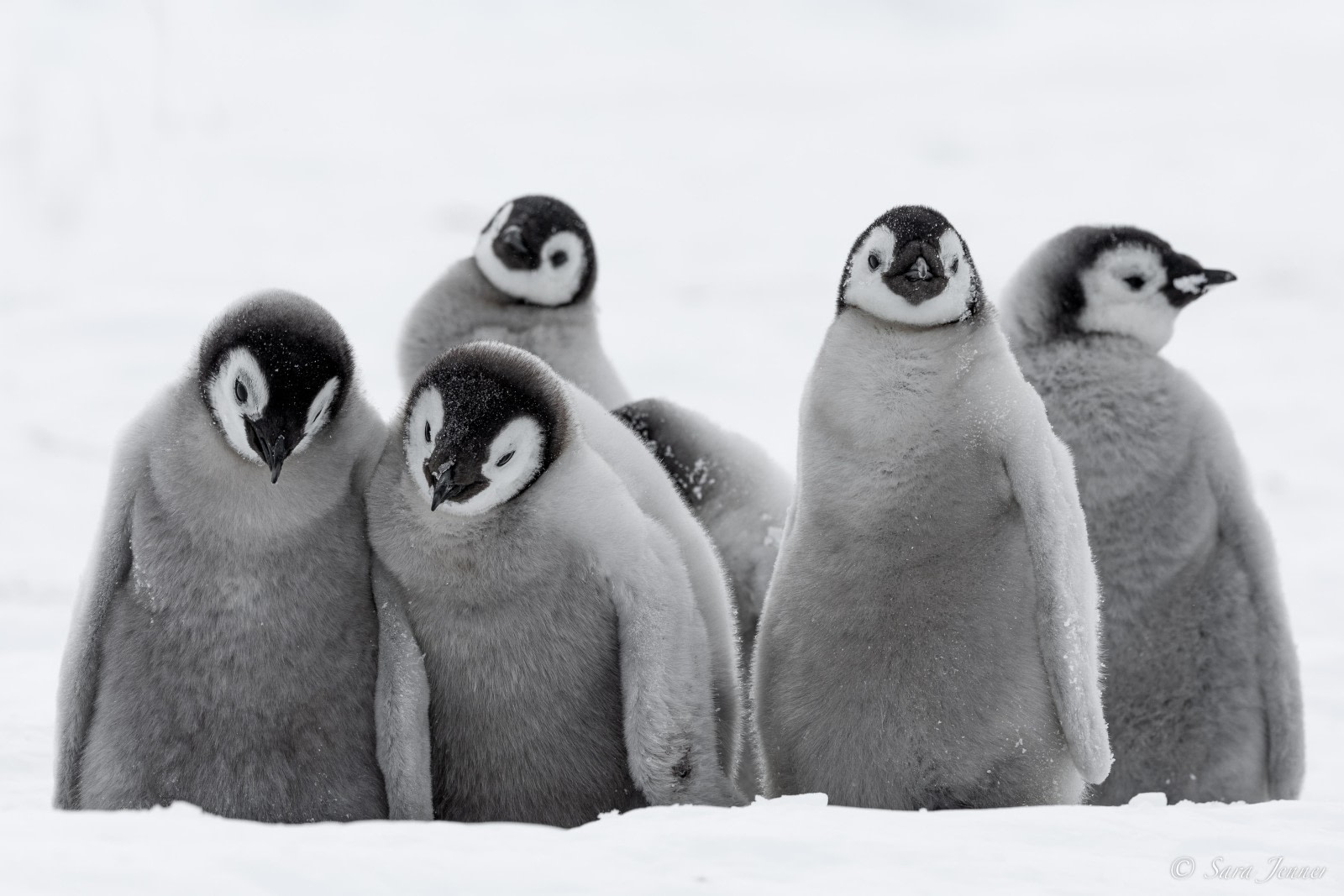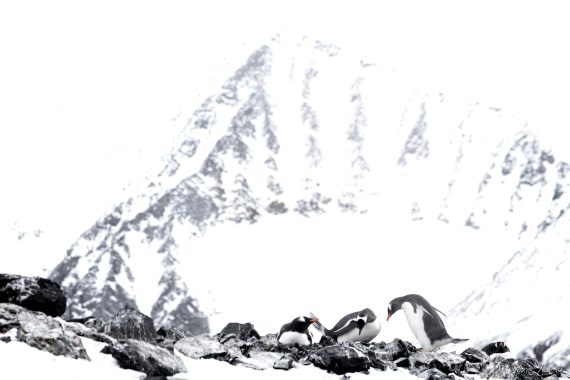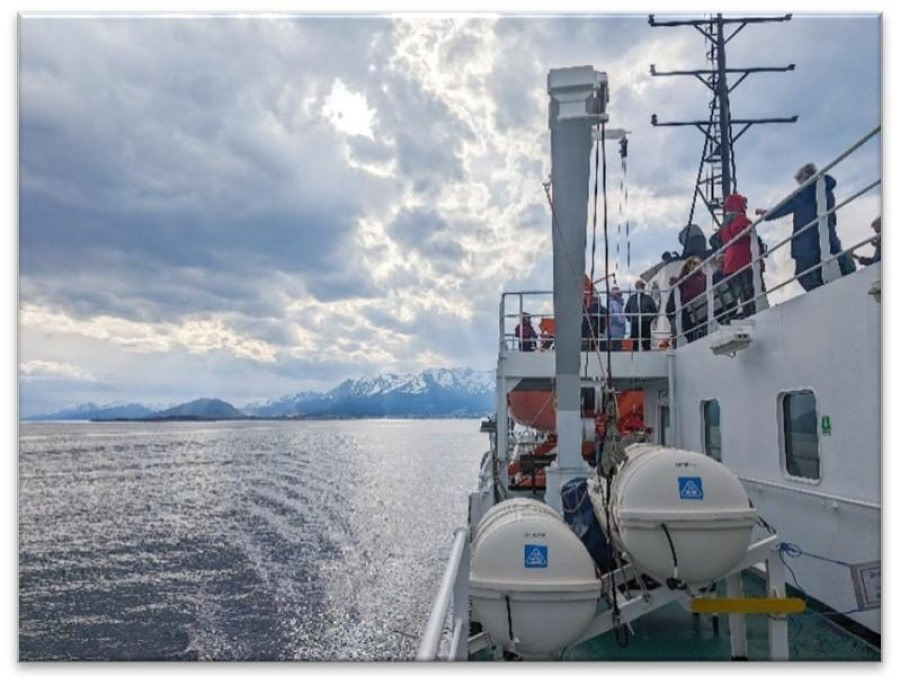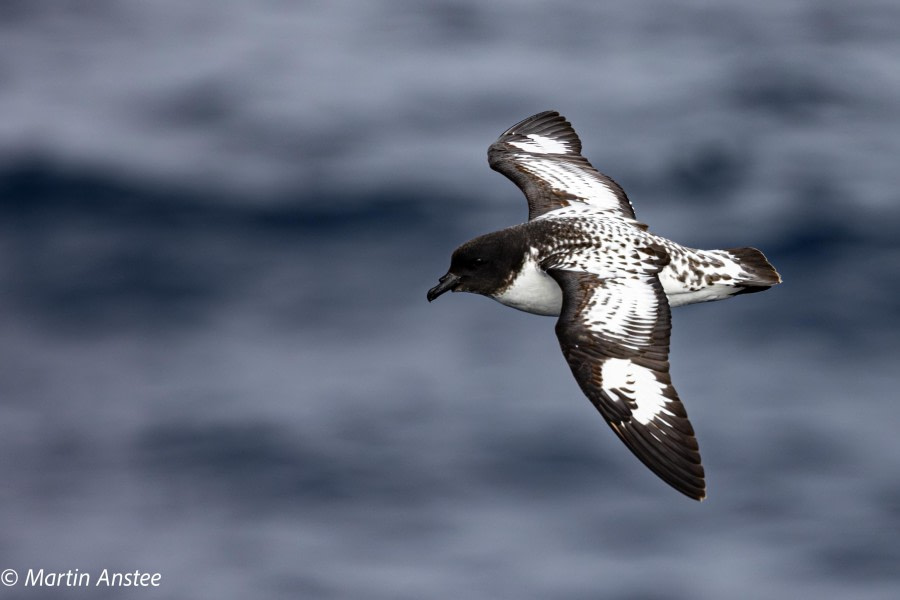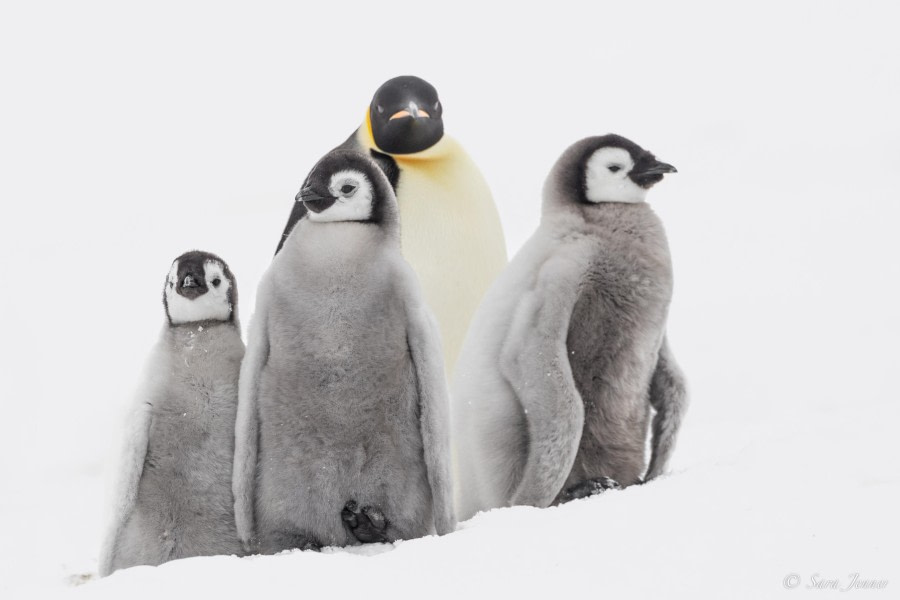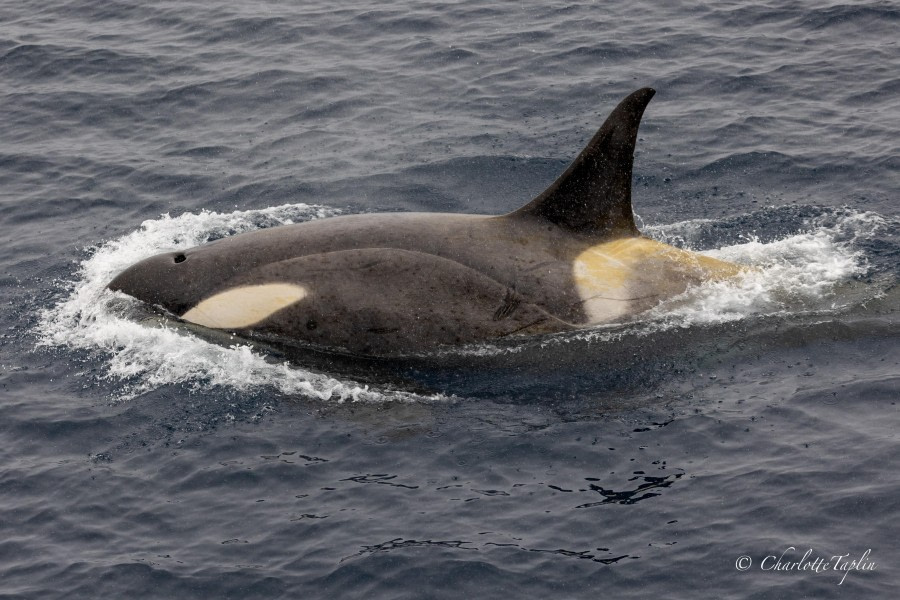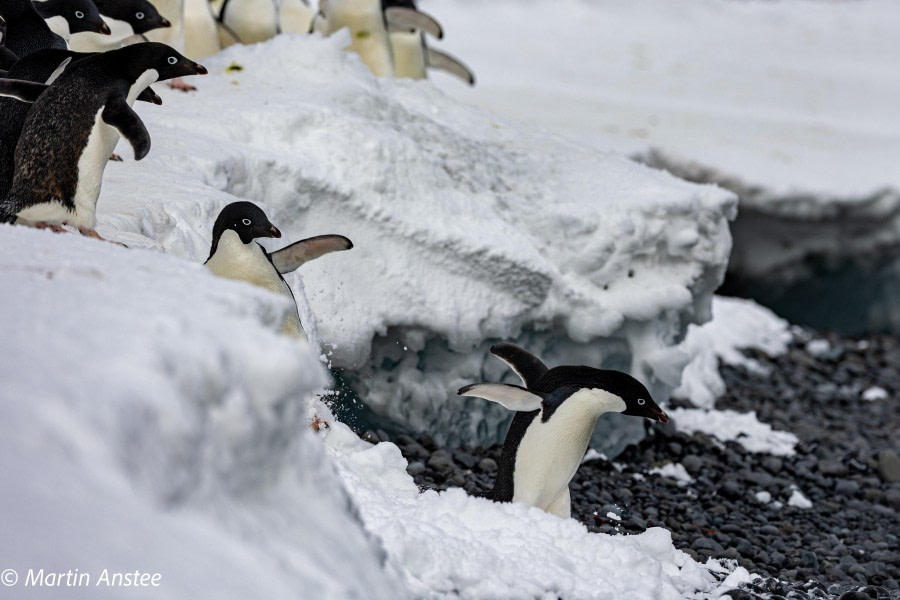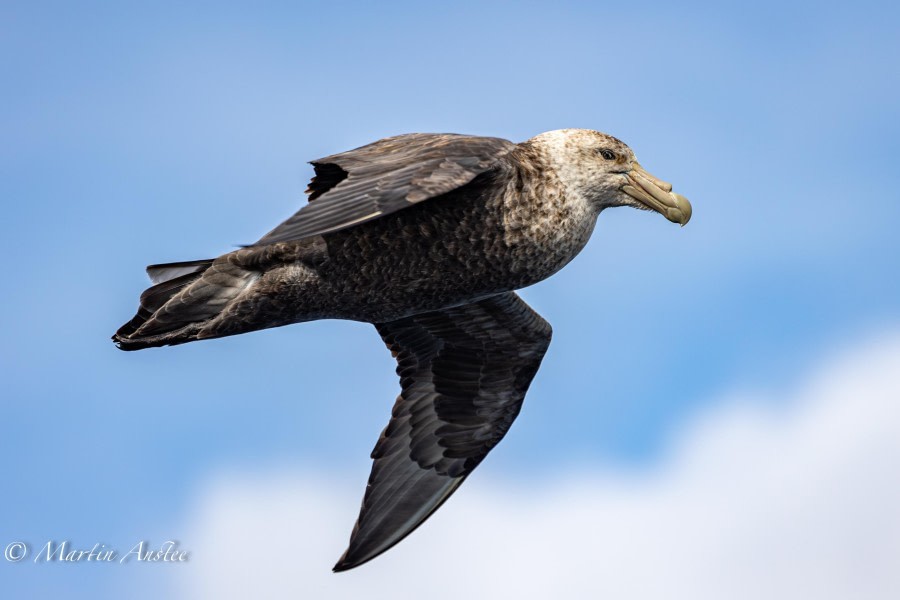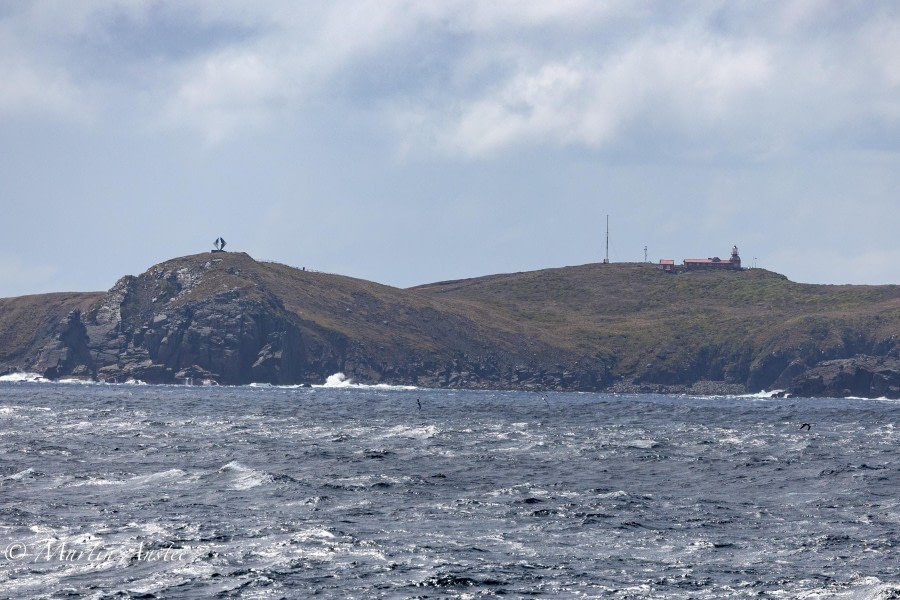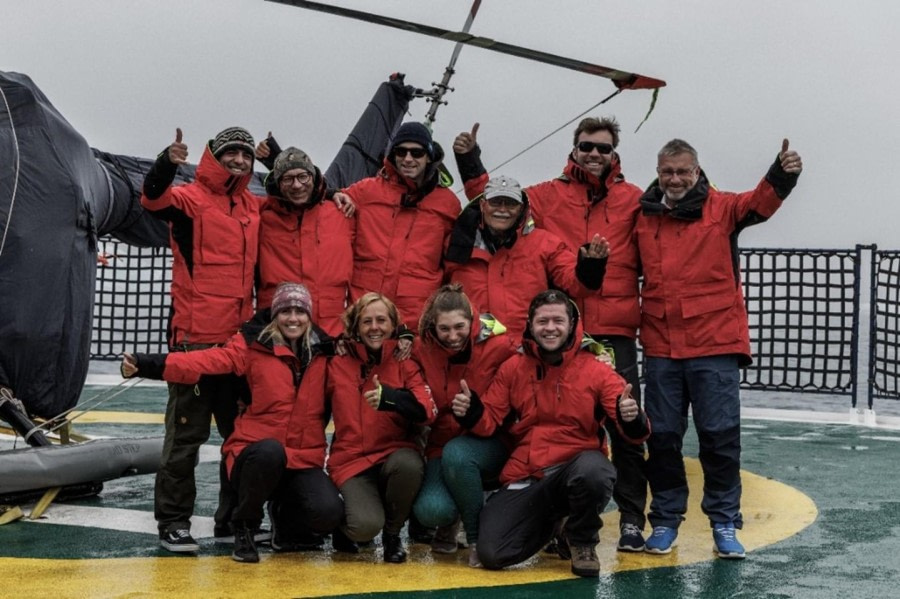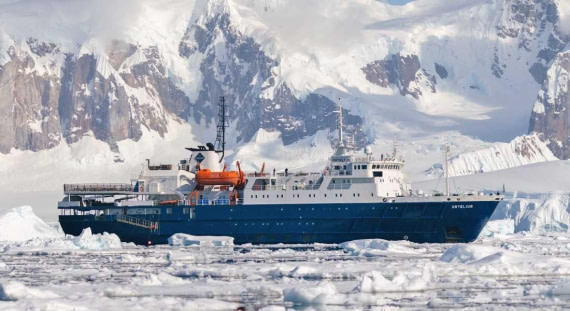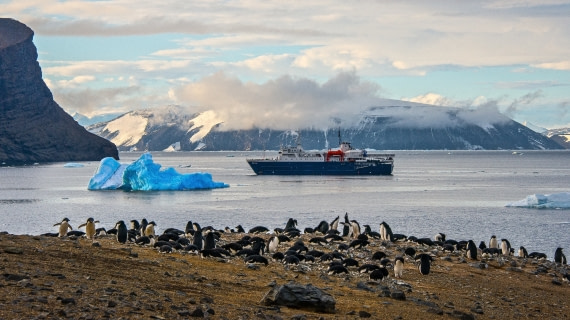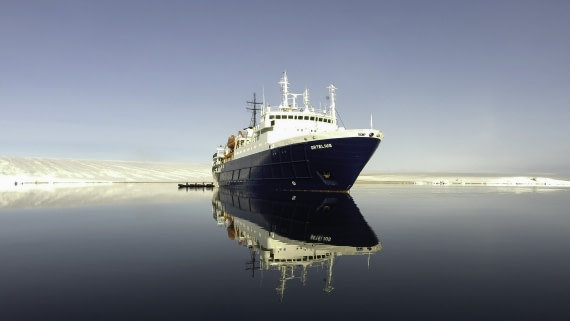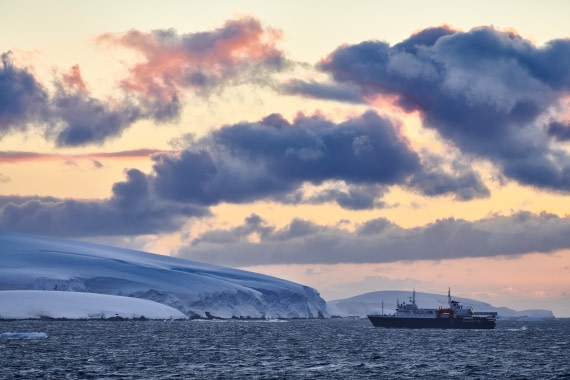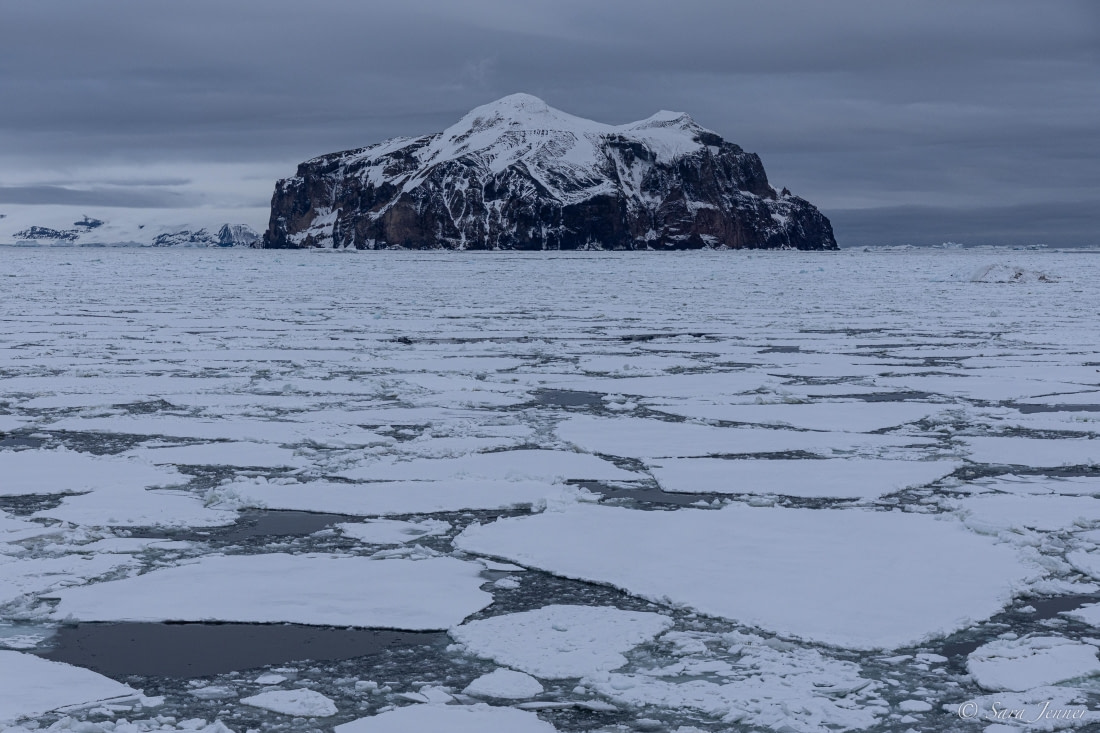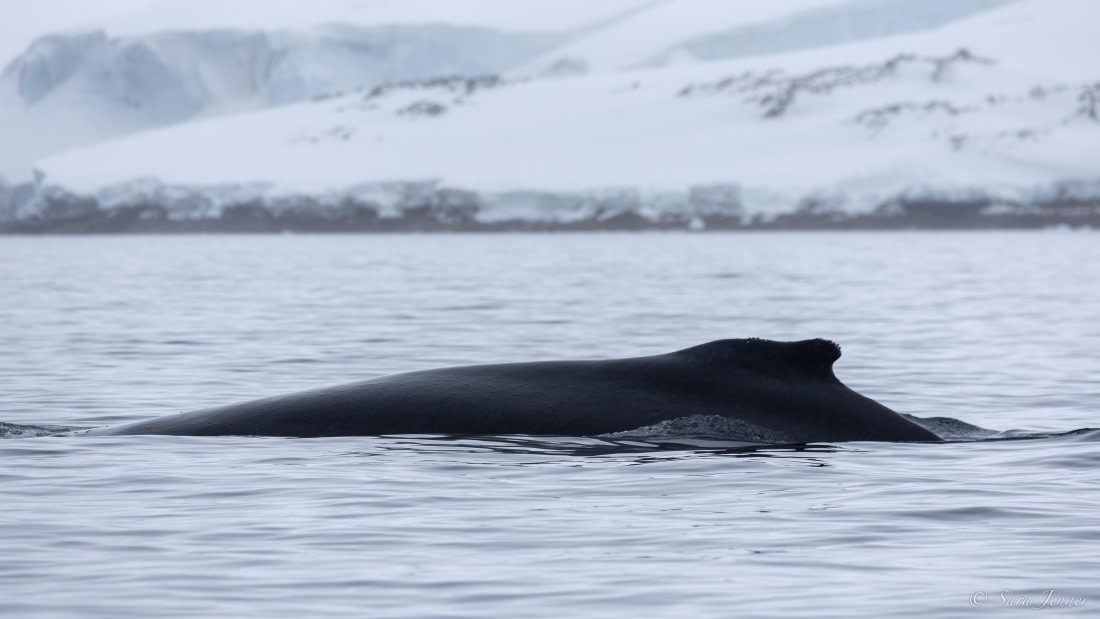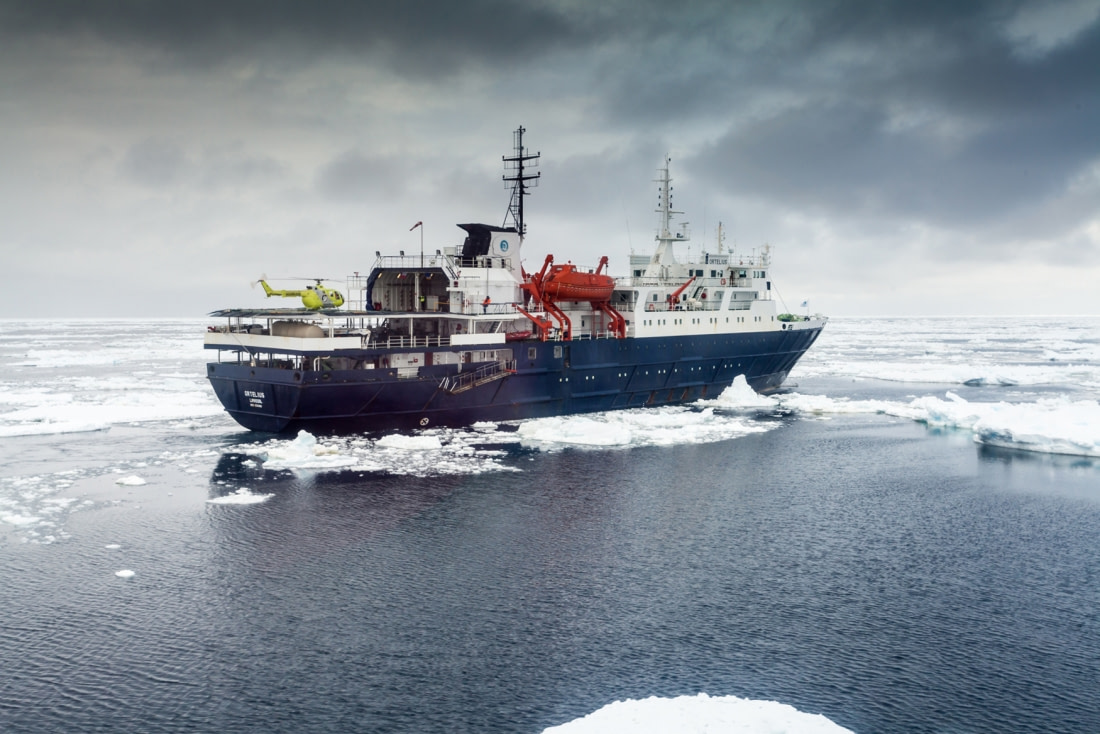| Datum: |
21.11.2023 |
| Positie: |
57°14.9’S / 064°24.1’W |
| Wind: |
SSW8 |
| Weer: |
Cloudy |
| Luchttemperatuur: |
+1 |
“Good morning, good morning, good morning.” It’s always a bit of a mystery when Sara wakes us up on the first morning of our journey. Overnight we’ve left the calm waters of the Beagle Channel, and we are out in the Drake Passage. Do we have the Drake Lake or Drake Shake? This morning we had a mild sea, but with sufficient movement of the ship the day before, quite a few of us felt that breakfast wasn’t a very attractive option. The swells were only up to three meters, so seasoned sailors considered it a dawdle, while newly minted Antarctic explorers felt decidedly otherwise. Nevertheless, the show must go on. Up on the bridge, the bird watchers were steadily ticking off new species as the morning wore on: Light-mantled Albatross, Cape Petrel, Southern Fulmar, Blue Petrel, and many more. Starting mid-morning, we started the process of getting everyone ready for the next 10 days.
First, we had the great gumboot giveaway. Everyone was called down to the lecture room to receive their muck boots for the trip. Shortly after that, Martin gave us a well-illustrated talk on the seabirds in the Drake Passage. All the while, the ship was scooting along at about 11 knots towards our goal of the Weddell Sea. During the day, the seas built up over the morning to a little stronger swell. We even had a few high splashes at the bow, soaking the hardy souls down on the ship’s bow with sea spray. But then in the later part of the afternoon, the sea started to calm down a little, so the ship was moving less as the day progressed.
Unfortunately, immediately after lunch we had our roughest part of the day. This happened at the exact same time that we gathered in the lounge for the last of our mandatory briefings, important information on Zodiac and helicopter operations that everyone must hear in order to get on and off the ship safely. It was a huge challenge for some, but those who felt the least well did a remarkable job of trying to finish the briefings. Everyone received their helicopter numbers and Liability release forms. We were now all set for the last of our required activities tomorrow, a dry run of getting into the helicopters and cleaning our equipment for biosecurity. Those things will take up the afternoon tomorrow. With a big sigh of relief, those who needed to their cabins to get horizontal quickly did so. Those who were still able gathered at the bar at 16:00 for a good introduction to photography given by Werner. He gave us all excellent tips on composition and handling of our cameras.
By then the sea was calming slightly, so we had a lovely hour of watching the peaceful sea as we continued motoring southeast towards the South Shetland Islands. As dinner approached, we had our first of our daily recaps. Sara told us about the plan for tomorrow (mostly our dry run with the helicopters and the biosecurity cleaning), a bit about the weather, and our progress. Charlotte then gave us a thorough description of the Drake Passage, and Gary followed up with an explanation of the Antarctic convergence.
Sara finished the recap with a wonderful visual demonstration of just how large those seabirds are that we had been watching all day. It’s so difficult to gauge their size while they are soaring over the featureless sea surface. Even the Cape Petrels, which appear to be quite small when seen from the ship, were just short of a meter in wingspan.
But the most remarkable, of course, was the Wandering Albatross with its huge wingspan. After our lovely dinner, we had free time. Things seemed to be looking up for the passengers who felt sick due to the rough seas. The bar was pretty well attended that evening, so perhaps the worst of the seas were finished for our southward trip.
